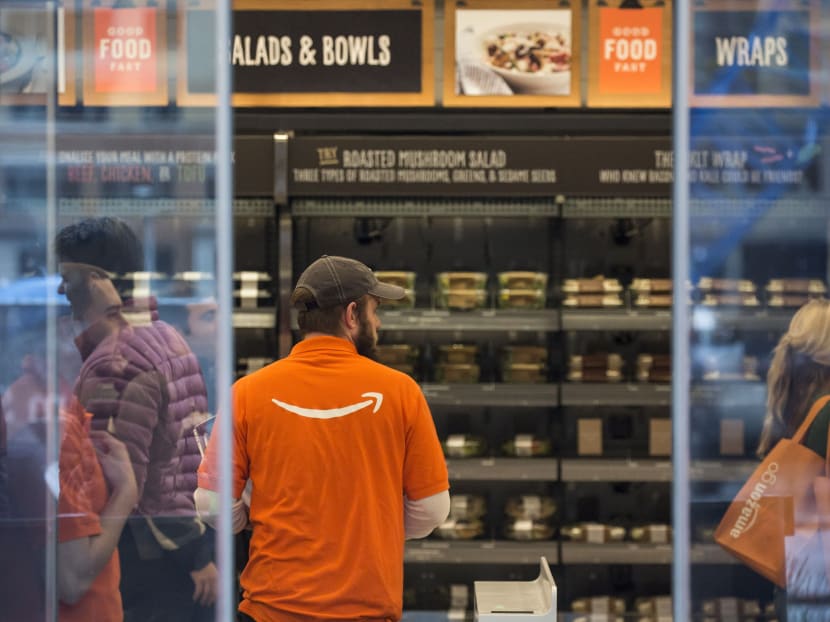Amazon moves to cut checkout line, promoting a grab-and-go experience
SEATTLE —There is almost no aspect of retail that Amazon has not upended with online shopping. Now, the company is trying to computerise the experience of buying sandwiches and soda from the corner convenience store.

An Amazon employee at work in the Amazon Go grocery store in Seattle, on Dec 5, 2016. Photo: The New York Times
SEATTLE —There is almost no aspect of retail that Amazon has not upended with online shopping. Now, the company is trying to computerise the experience of buying sandwiches and soda from the corner convenience store.
In the latest in its expanding set of experiments involving brick-and-mortar retail stores, Amazon has created a small grocery store in Seattle that will allow customers to pluck drinks, prepared meals and other items off shelves and walk out without having to wait in a checkout line, the company said.
Amazon said on its website that a smartphone app and various other types of technology in the store had eliminated the usual bottleneck of cashiers and registers that typically stand between shoppers and the store exit.
For now, only Amazon employees can shop in the 1,800-square-foot store, which is on the ground floor of one of the company’s new office towers in downtown Seattle. The company said that it planned to open the store to the public early next year and that it would offer chef-made meal kits with ingredients for quickly preparing dinners at home.
“Four years ago, we started to wonder: What would shopping look like if you could walk into a store, grab what you want and just go?” a narrator says in a video about the store concept, called Amazon Go, which the company posted online on Monday.
Amazon did not say what its expansion plans were for Amazon Go. If they are anything like the what the company has done with its other brick-and-mortar stores, new locations will open elsewhere slowly over time as Amazon learns how customers use the first one.
Amazon opened its first physical book store just over a year ago in a Seattle shopping mall. It has added others in the San Diego and Portland, Oregon, areas and has said it will open new book stores in Chicago and Boston.
It is also working on an another grocery store concept that would allow customers to order food items online and then pick them up quickly by pulling into parking stalls. Two such stores are under construction in Seattle, according to documents filed with the city’s planning department and people with knowledge of the effort who asked for anonymity because the plans were confidential.
Ms Pia Arthur, an Amazon spokeswoman, declined to comment on the grocery pickup locations.
In the grand scheme of Amazon’s business, analysts consider the retail stores to be an infinitesimal portion of the more than US$135 billion (S$191.7 billion) in sales expected from the company this year.
But the plans reflect a growing recognition by the company that certain categories of shopping are unlikely to move completely online. In some cases, it is simply more convenient to buy items in a store or more attractive to browse for them on physical shelves.
“The way we think about it is the size of online retail is going to continue to grow dramatically but there will always be an offline option,” said Mr Gene Munster, an analyst at Piper Jaffray. “They’re trying to streamline and capture a portion of that offline experience.”
Amazon still views technology as being useful in overhauling shopping in traditional retail shops. While the company has not said exactly how the Amazon Go stores will work, visitors will gain entry to them through a smartphone app. The company said the stores relied on a variety of technologies similar to those in self-driving cars, including those defined by buzzwords such as “computer vision, sensor fusion and deep learning.”
Unanswered for now are questions about how the stores would handle shoplifting and whether there would be employees on hand to check identification cards for alcohol purchases. THE NEW YORK TIMES





